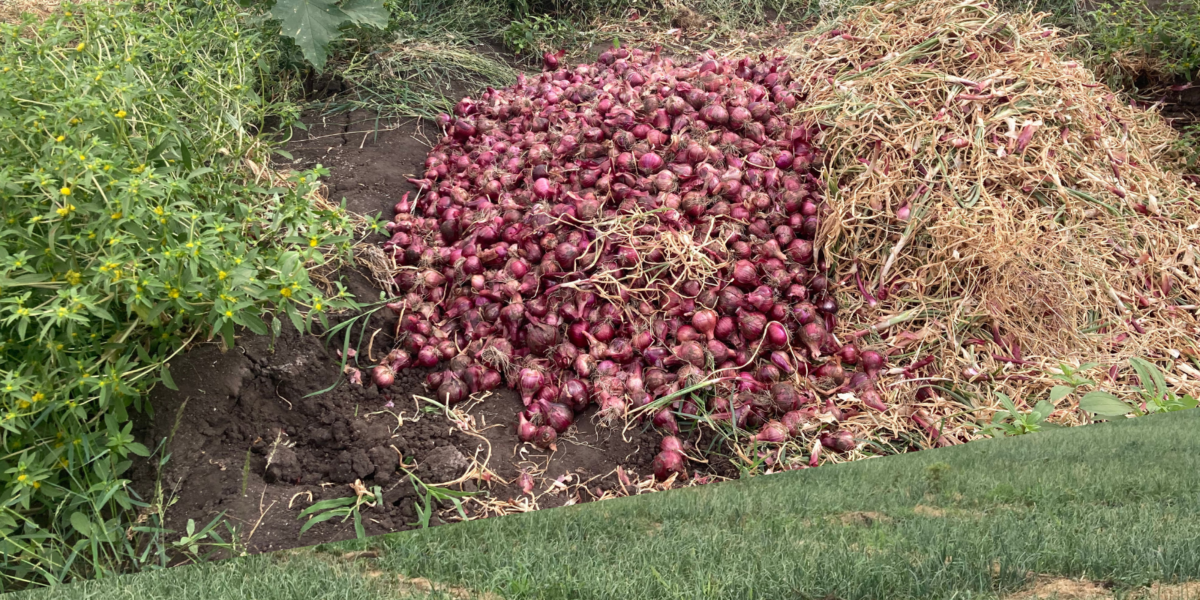Onions (Allium cepa) are an important part of the Kenyan cuisine. However, most of the onions we find in our market come from neighbouring countries like Tanzania simply because our local farmers cannot meet the prevailing market demands on their own.
Have you ever thought of being part of the people who help bridge this gap? Well, venturing into onion farming whether through a small-scale or large-scale venture is the way to go. You only need to carry out proper market research, get the crop variety right, identify the right piece of land, and above all engage in proper farming practices.
Here’s a guide to help you ace onion farming in Kenya.
Onion Farming – How to Do It in Kenya
So, how do you go about setting up a thriving onion farm? We have all the details you need to be paying attention to.
Capital Outlay (Estimates) For a 1 Acre Onion Farm
Here is an outline of what your financial preparedness should be like. This is done assuming the land already has access to a permanent source of water.
| Item | Quantity | Amount |
|---|---|---|
| Land leasing | 1 acre | 20,000 |
| Ploughing | 1 acre | 4,000 |
| Agrochemicals | 6 liters, 4kgs | 20,000 |
| Labour | 90 man-days @300 | 27,000 |
| Soil testing | _ | 5,000 |
| Fertilizers: D.A.P C.A.N | 80kg @120 120kg @ 85 | 9,600 10,200 |
| Water Pump | – | 30,000 |
| Water pipes + Fuel | 40,000 | |
| Manure | 16 tonnes @1000 per tonne | 16,000 |
| Certified seeds | 1.8KG @6300 per Kg | 11,340 |
| Miscellaneous | 10,000 | |
| Total | 203,140 |
Getting Your Onion Variety Right
After determining how much you need for your project, it is imperative to pick the right variety of onions based on yield, tolerance to disease, time to maturity and of course suitability. The following are some popular onion varieties planted in Kenya:
- Bombay Red
- Neptune F1
- Red Creole
- Red Star
- Tropicana
- Texas Grano
Site Selection

Once you identify the right onion variety, the next step is to find the right piece of land on which to set up your agri-business venture. Generally, the ideal piece of land for onion farming in Kenya should meet the following criteria:
Altitude: You can grow onions at an altitude of 0-1900 meters above sea level.
Temperature: Onions grow at an optimum temperature of between 15-30°Celsius anything above 30° might adversely affect yields.
Rainfall: Onions require 500-700 mm of rainfall across the growing period. They do well under irrigation due to controlled water supply. Avoid areas with excess rain since onions are sensitive to water logging.
Soils: Onions require fine tilt, well-drained fertile soils, with a pH of 6.0 to 6.8.
Onions do well in areas like Kajiado (Isinya), Nyeri (Kieni), Nanyuki, Kitui, Baringo, Taveta (Njukini), and Narok among other regions.
NOTE: It is recommended to do soil testing to determine the composition of nutrients which later inform the soil amendments to be adopted.
Nursery Establishment and Planting
Once you have settled on the appropriate piece of land, the next step is to plough it – ideally this should be done using a tractor. Afterwards, the land should be harrowed to acquire a fine tilth (fine soil texture).
As the land is being prepared, it is time to source your seeds – for this, be sure to get your certified seeds from a KEPHIS-accredited dealer like Kenya Seed, Simlaw Seed or any other reputable nursery near you.
To establish the farm, begin by establishing 1-metre-wide nursery beds – the raised nursery beds should have animal manure (well-composted) added for optimal crop nutrition. The seedlings should be planted singly on drills 15cm apart and covered lightly with soil before watering.
Onions are typically ready to be transplanted to the main farm after about 6 weeks in the nursery. To do this, make holes 3cm deep and transplant the seedlings at a spacing of 10cm between plants and 30cm between rows.
Mix well composted manure with the soil at a rate of approximately 16 tonnes of manure per acre. In addition, be sure to apply at least 80KGs of DAP fertilizer per acre. Later (at the vegetative stage) you will need to add at least 120KGs of CAN fertilizer per acre.
Water should be frequently supplied to the crop to maturity. Upon maturity, the crop should not be watered to allow for it to be primed for the market.
All through the growing season, keep the field weed-free by manually weeding or by application of selective herbicides.

Pest and Disease Management
Onions are affected by several diseases including:
- Purple blotch – characteristic water-soaked lesion on the leaves that later enlarge to brown purple spots. Control by planting resistant varieties like Red Creole and use of fungicides like Ridomil Gold.
- Downy mildew – characterized by pale gray spots that make the leaves collapse. Control by maintaining field hygiene and use of Ortiva.
- Rust – the stem develops circular elongated spots. Crop rotation and the use of fungicides would help.
- Fusarium rot – yellowing of roots hence bulb rot. Use certified seeds that are free from seed-borne diseases too.
- Onion thrips and leaf miners can be problematic pests. Control them using Dynamec.
Harvesting and Post-Harvest Management
Onions are ready for harvesting about 120 days after transplanting. Key maturity indices are yellowing and falling over of leaves. Harvest by carefully uprooting the bulbs, be keen not to injure the bulbs followed by disconnecting the leaves 3.5 cm off the stem. Leave the bulbs to dry for 2 days before removing excess soil and roots.
The onions should be cured for two weeks in a well-ventilated room to increase shelf life. Grade your onions according to size then store them in a well-ventilated area.
Marketing
It is important to seek the market of your onions earlier before harvest. While that is essential, onions pretty much have a ready market both locally and internationally.
The market for onions is dictated by the following factors:
- Demand and supply – during the peak harvesting period there is flooding of the market thus wise to properly store your onions to sell off-season.
- Seasonality: onion is a highly seasonal crop hence during the rainy season there is normally oversupply of onions thus affecting prices.
- Quality – Better quality onions fetch higher prices in the market.
The farm gate price for a kilo of bulb onion is Kes 60 (at low supply seasons), with an average of 15 tonnes of onions per acre, you expect Ksh900,000 in five months making it a worthwhile venture.

Conclusion
Are you aspiring to diversify your business ventures? There you have it, a comprehensive guide to onion farming in Kenya. As you can see, this is a high potential agribusiness idea and one that can significantly change your financial fortunes if done right.
Generate a Business Plan (PDF) for your Onion Farming Idea Instantly
10-Page Plan for Just Ksh50/- per PDF.

With a BSc in Agricultural Biotechnology, Dennis is a results-oriented author who draws extensively from his farm management experience. When he’s not working on the farm or contributing to the Bizsasa platform, he enjoys watching soccer with friends.

Interested in Salad onion farming and garlic farming. Any literature on the same will be appreciated
Duly noted Philip. We’ll provide the literature as and when we gather ample information about it.
Comments are closed.